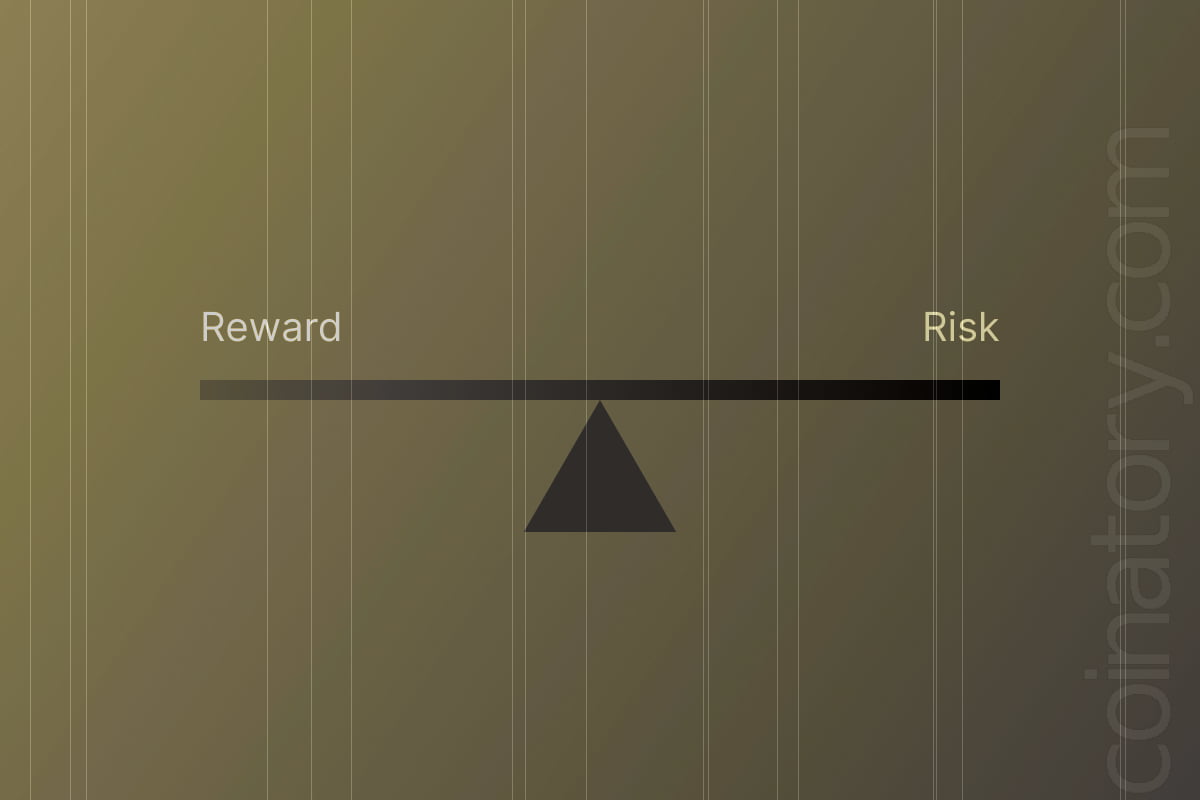
The most important key to your crypto success
The risk-to-profit ratio is the most important coefficient in cryptocurrency trading. It was designed to calculate the potential profitability on a trade relative to the inherent risk and the trader’s strategy. RR allows you to understand whether your crypto trading is profitable or not.
The ratio of risk to profit is calculated after drawing up a trading plan, determining the entry and exit points and the level of stop-loss. It also should be calculated individually for each position based on the trader’s trading strategy, taking into account statistics and opportunities.
The competent ratio of risk and profit allows earning in the long term in case of the correct analysis of the results of your trading strategy.
What is a risk-to-profit ratio (RR)?
The risk/reward ratio (Risk/Reward Ratio or RR) is a ratio that shows the ratio of risk to potential profit. The specific value of RR is calculated before buying an asset and allows estimating the transaction potential from the trader’s trading strategy point of view.
If the ratio of risk to profit is greater than 1, then the risk is greater than the potential profit. When the value is below unity, the potential profit is greater than the inherent risks.
From the perspective of trading and investing, risk means the potential loss that a trader is willing to accept when opening a position. The risk level is usually controlled by placing stop-loss orders, i.e. orders to automatically sell an asset when a certain price is reached. This is an important trading tool, and not only for limiting losses. The risk level is an integral part in calculating a trader’s potential profit and his trading strategy as a whole.
Profit is the difference between the purchase price of an asset and the price at which it will be sold. In the context of RR ratio profit is a potential level that a trader determines before entering a position in order to estimate the trading operation potential.
How to calculate the risk/profit ratio correctly
The common variant of RR ratio calculation is defined as the ratio of risk to profit, i.e. RR equals the risk divided by the profit. Although some traders, due to personal preferences, may use the reverse version, where profits are divided by risk, we will consider a standard example of calculation.
Suppose you want to buy an asset at $100. You have also decided to limit your risk, that is, put your stop loss, at $90, and set your target price at which you will sell the asset, at $130. In this case, the RR ratio will be 1 to 3 or a ratio with an approximate value of 0.33. That is, the risk is less than the potential profit.
In the example with the same entry price ($100), and the same target price ($130), but with a stop loss set at $40, the RR ratio would be 2. This value indicates that the risk is much higher than the expected profit.
What is the optimal ratio of risk-to-profit?
One of the most popular values when calculating the risk/profit ratio is 1 to 3 or ratio of 0.33. Ratios of 1 to 7, 1 to 10, and 1 to 15 are also often used.
However, choosing the common RR variants is a serious mistake in trading. A trader must determine himself which RR ratio fits best to his trading strategy based on the experience, statistics, market conditions.
For example, if a trader makes only 50% of successful trades, RR ratio of 0.5 or 1 to 2 will not bring any benefit. The target selling price of an asset before entering a trade should statistically bring the trader a profit, not just specifically in this trade. In the 1 to 3 ratio or 0.33 ratio example, the point of RR is that one profitable trade can cover 3 losing trades. In the case where the ratio is 1 to 5, then one profitable trade will have to cover 5 losing trades.

Before assessing risks and making RR calculations, a trader assesses the potential of price movement, finds a point to enter and makes a forecast of price movement for the asset, also having determined the moment to exit the position.
Only after that it makes sense to calculate RR. If the obtained ratio corresponds to the trader’s trading strategy, he enters a position.
ForkLog newsletters: keep your hand on the pulse of the bitcoin industry!
Why you should calculate risk-to-profit ratio
RR is calculated in order a trader could use his trading strategy effectively, adjusting the necessary level of risk and profit to receive the income on a long period of time.
Even if the percentage of successful trades is not very high, say 20%, a proper risk-profit ratio can bring a trader the income over a long period of time.
Answers to the most popular questions
What is the profit to risk ratio?
The Risk/Reward Ratio, or RR, is a way of evaluating a trader’s trade potential based on his or her trading strategy and capabilities. Simply put, the RR indicates whether a trade is profitable or not based on potential risk and profit.
What is a win rate in trading?
The win rate in trading is the ratio of the number of profitable trades to the number of losing trades. For example, if you close 60% of trades with profit and 40% of them with loss, then your win rate is 0.6 to 0.4, or 1.5.
What is 1 in 3 in trading?
1 to 3 in trading is one of the most popular ratios of profit to risk among traders. It means that at least 1 out of 4 trades should be profitable. However, such a ratio should be in line with the trading strategy chosen and correlated to the spin rate. In some cases optimal ratio of profitable trades to loss-making ones can be different.







